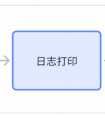
✨个人主页: 熬夜学编程的小林
💗系列专栏: 【C语言详解】 【数据结构详解】【C++详解】
日期类
1、日期类的分析和设计
1.1、日期类的功能说明
1.2、日期类的分析和设计
1.2.1、数据结构的分析
1.2.2、文件结构设计
2、日期类的结构分析
2.1、创建日期类及声明
2.2、在类内实现获取天数函数
2.3、在类外实现构造函数
2.4、在类外实现拷贝构造函数
2.5、在类外实现赋值运算符重载
2.6、在类外实现日期的比较
2.7、在类外实现日期+-天数
2.8、在类外实现日期-日期
3、日期类分文件的代码实现
3.1、test.cpp
3.2、Date.cpp
3.3、Date.h
总结
1、日期类的分析和设计
1.1、日期类的功能说明
创建一个日期类,通过运算符重载实现对日期的相关计算以及比较功能。包含如下:
1、重载日期的大小比较(> == >= < <= !=)
2、重载赋值操作符
3、重载日期+= / -=天数
4、重载日期+ / -天数
5、重载日期前置++ / --
6、重载日期后置++ / --
7、重载日期 - 日期
1.2、日期类的分析和设计
1.2.1、数据结构的分析
创建一个日期类,成员变量包括年月日(最好将成员变量权限设置为private,这样在类外就无法访问类中成员变量,起到一定的保护作用),内部实现获取某年某月的天数的函数,为了实现分文件设计,类中只需声明构造函数,拷贝构造函数以及日期类需要实现的重载函数。
1.2.2、文件结构设计
之前我们在C语言中学习了多文件的形式对函数的声明和定义,这里我们C++实践⼀下,我们设计三个文件:
test.cpp //文件中日期类的测试逻辑
Date.cpp //文件中写类中重载函数的实现等
Date.h //文件中写日期类需要的数据类型和函数声明等
建议:写一些代码就测试一些代码。
2、日期类的结构分析
2.1、创建日期类及声明
注意:在实现操作函数之前判断是否会修改成员变量的值,如果不需要改变成员变量的值,可以使用const修饰来保护代码。
class Date{public:// 构造函数Date(int year, int month, int day);// 拷贝构造函数// d2(d1)Date(const Date& d);// 赋值运算符重载// d2 = d3 -> d2.operator=(&d2, d3)// >运算符重载bool operator>(const Date& d) const;// ==运算符重载bool operator==(const Date& d) const;// >=运算符重载bool operator >= (const Date& d) const;// <运算符重载bool operator < (const Date& d) const;// <=运算符重载bool operator <= (const Date& d) const;// !=运算符重载bool operator != (const Date& d) const;// 操作赋值操作符Date& operator=(const Date& d);// 日期+=天数Date& operator+=(int day);// 日期+天数Date operator+(int day) const;// 日期-天数Date operator-(int day) const;// 日期-=天数Date& operator-=(int day);// 前置++Date& operator++();// 后置++Date operator++(int);// 后置--Date operator--(int);// 前置--Date& operator--();// 日期-日期 返回天数int operator-(const Date& d) const;private:int _year;int _month;int _day;};2.2、在类内实现获取天数函数
根据我们日期的规则,只有2月的天数是不同的,此时我们可以创建一个数组来存放对应年份月份的天数,如果是平年的2月则为28天,如果是闰年的2月则为29天,因此我们在创建完数组之后判断一下即可。
uu们可能不太了解什么情况是闰年,闰年的规则如下:
1、每4年为一个闰年,每100年为平年。即年份%4==0且年份%100!=0.
2、每400年为一个闰年。即年份%400==0。
代码实现如下:
// 获取某年某月的天数int GetMonthDay(int year, int month){int days[13] = { 0,31,28,31,30,31,30,31,31,30,31,30,31 };//下标表示月份if (((year % 4 == 0 && year % 100 != 0) || (year % 400 == 0))&&(month == 2) )return 29;return days[month];}uu们可能一开始就写出上面的代码, 那么这个代码有没有问题呢?或者说效率高不高呢?
小林的答案是有问题,效率也没有尽可能进行优化,原因如下:
1、可以将该函数加上const进行修饰,因为后面重载函数的实现中可能会被const修饰,那么如果没有const修饰,可以调用该函数,如果有const修饰的函数就不能调用此函数。但是该函数加上const修饰,不管是否有const进行修饰函数,都可以调用。
2、没有对月份进行判断,我们的月份只有1到12月,但是我们不做判断传入负数或者大于12的月份,因此此处可以用我们C语言所学习的断言语句。
3、创建的数组是在栈区创建的,但是获取天数的函数会经常调用,那么调用一次函数就会创建一个栈空间,效率很低,此处我们可以使用static修饰,将数组放在静态区,那么就只会创建一次。
4、判断是否为闰年时,我们可以做小小的调整,根据C语言学习的短路求值原则,与运算中左边的为假则结束运算,因此我们可以将容易判断的条件放在左边。
经过调整的获取某年某月的天数函数如下:
// 获取某年某月的天数int GetMonthDay(int year, int month) const{assert(month > 0 && month < 13);//月份的判断// 因为该函数会经常调用,但是数组的值一直是不需要变化的,因此可以使用静态数组// 好处是在静态区只会创建一份变量static int days[13] = { 0,31,28,31,30,31,30,31,31,30,31,30,31 };if ((month == 2) && ((year % 400 == 0) || (year % 4 == 0 && year % 100 != 0) ))return 29;return days[month];}注意:该函数实现的年数对负数是不支持的,1582年也可能会出现问题,因为1582年少了10天。
2.3、在类外实现构造函数
注意:在类外实现类中声明的构造函数需要使用域作用符。
// 构造函数Date::Date(int year, int month, int day){_year = year;_month = month;_day = day;}2.4、在类外实现拷贝构造函数
// 拷贝构造函数// d2(d1)Date::Date(const Date& d){_year = d._year;_month = d._month;_day = d._day;}2.5、在类外实现赋值运算符重载
// 赋值运算符重载// d2 = d3 -> d2.operator=(&d2, d3)Date& Date::operator=(const Date& d){_year = d._year;_month = d._month;_day = d._day;return *this;}2.6、在类外实现日期的比较
// >运算符重载bool Date::operator>(const Date& d) const{if (_year > d._year)return true;else if (_year == d._year){if (_month > d._month)return true;else if (_month == d._month){if (_day > d._day)return true;}}return false;}// ==运算符重载bool Date::operator==(const Date& d) const{return _year == d._year&& _month == d._month&& _day == d._day;}// >=运算符重载bool Date::operator >= (const Date& d) const{return *this > d || *this == d;}// <运算符重载bool Date::operator < (const Date& d) const{return !(*this >= d);}// <=运算符重载bool Date::operator <= (const Date& d) const{return !(*this > d);}// !=运算符重载bool Date::operator != (const Date& d) const{return !(*this == d);}注意:此处使用的思想是先实现两个比较操作,然后通过位运算操作符实现其他的操作。
2.7、在类外实现日期+-天数
// 日期+=天数Date& Date::operator+=(int day){_day += day;while (_day > GetMonthDay(_year, _month)){_day -= GetMonthDay(_year, _month);++_month;if (_month == 13){++_year;_month = 1;}}return *this;}// 日期+天数 ---使用前面实现的+=运算符重载实现//Date Date::operator+(int day) const//{//Date temp(*this);//temp += day;//return temp;//} // 日期+天数 ---直接实现Date Date::operator+(int day) const{Date temp(*this);temp._day += day;while (temp._day > GetMonthDay(_year, _month)){temp._day -= GetMonthDay(temp._year, temp._month);++temp._month;if (temp._month == 13){++temp._year;temp._month = 1;}}return temp;}// 日期-=天数Date& Date::operator-=(int day){_day -= day;while (_day <= 0){--_month;if (_month == 0){--_year;_month = 12;}_day += GetMonthDay(_year, _month);}return *this;}// 日期-天数 ---使用前面-=运算符重载实现Date Date::operator-(int day) const{//Date temp(*this);Date temp(*this);temp -= day;return temp;} 日期-天数 ---直接实现//Date Date::operator-(int day) const//{////Date temp(*this);//Date temp(*this);//temp._day -= day;//while (temp._day <= 0)//{//--temp._month;//if (temp._month == 0)//{//--temp._year;//temp._month = 12;//}//temp._day += GetMonthDay(temp._year, temp._month);//}//return temp;//}// 前置++Date& Date::operator++(){*this += 1;return *this;}// 后置++Date Date::operator++(int){Date temp(*this);*this += 1;return temp;}// 后置--Date Date::operator--(int){Date temp(*this);*this -= 1;return temp;}// 前置--Date& Date::operator--() const{*this -= 1;return *this;}2.8、在类外实现日期-日期
思想:计算第一个类与第二个类的差值,我们在前面已经实现了++和比较操作,此处只需要先判断哪个日期类大,小的日期类++多少次等于大的日期类就是相差的天数。
// 日期-日期 返回天数int Date::operator-(const Date& d) const{int flag = 1;Date max = *this;Date min = d;if (*this < d){flag = -1;max = d;min = *this;}int n = 0;while (min != max){min++;n++;}return n * flag;}3、日期类分文件的代码实现
3.1、test.cpp
#define _CRT_SECURE_NO_WARNINGS#include "Date.h"int main(){Date d1(2022, 1, 1);d1 += 1;Date d2(2022, 1, 2);d2 = d2 + 10;Date d3(2022, 1, 3);d3 -= 2;Date d4(2022, 1, 4);d4 = d4 - 10;Date d5(2022, 1, 5);Date d6 = d5--;//Date d6 = d5.operator--(10); //后置--Date d7(2022, 1, 18);Date d8(2022, 1, 8);cout << (d7 - d8) << endl;return 0;}3.2、Date.cpp
#define _CRT_SECURE_NO_WARNINGS#include "Date.h"// 构造函数Date::Date(int year, int month, int day){_year = year;_month = month;_day = day;}// 拷贝构造函数// d2(d1)Date::Date(const Date& d){_year = d._year;_month = d._month;_day = d._day;}// 赋值运算符重载// d2 = d3 -> d2.operator=(&d2, d3)Date& Date::operator=(const Date& d){_year = d._year;_month = d._month;_day = d._day;return *this;}// >运算符重载bool Date::operator>(const Date& d) const{if (_year > d._year)return true;else if (_year == d._year){if (_month > d._month)return true;else if (_month == d._month){if (_day > d._day)return true;}}return false;}// ==运算符重载bool Date::operator==(const Date& d) const{return _year == d._year&& _month == d._month&& _day == d._day;}// >=运算符重载bool Date::operator >= (const Date& d) const{return *this > d || *this == d;}// <运算符重载bool Date::operator < (const Date& d) const{return !(*this >= d);}// <=运算符重载bool Date::operator <= (const Date& d) const{return !(*this > d);}// !=运算符重载bool Date::operator != (const Date& d) const{return !(*this == d);}// 日期+=天数Date& Date::operator+=(int day){_day += day;while (_day > GetMonthDay(_year, _month)){_day -= GetMonthDay(_year, _month);++_month;if (_month == 13){++_year;_month = 1;}}return *this;}// 日期+天数 ---使用前面实现的+=运算符重载实现//Date Date::operator+(int day) const//{//Date temp(*this);//temp += day;//return temp;//} // 日期+天数 ---直接实现Date Date::operator+(int day) const{Date temp(*this);temp._day += day;while (temp._day > GetMonthDay(_year, _month)){temp._day -= GetMonthDay(temp._year, temp._month);++temp._month;if (temp._month == 13){++temp._year;temp._month = 1;}}return temp;}// 日期-=天数Date& Date::operator-=(int day){_day -= day;while (_day <= 0){--_month;if (_month == 0){--_year;_month = 12;}_day += GetMonthDay(_year, _month);}return *this;}// 日期-天数 ---使用前面-=运算符重载实现Date Date::operator-(int day) const{//Date temp(*this);Date temp(*this);temp -= day;return temp;} 日期-天数 ---直接实现//Date Date::operator-(int day) const//{////Date temp(*this);//Date temp(*this);//temp._day -= day;//while (temp._day <= 0)//{//--temp._month;//if (temp._month == 0)//{//--temp._year;//temp._month = 12;//}//temp._day += GetMonthDay(temp._year, temp._month);//}//return temp;//}// 前置++Date& Date::operator++(){*this += 1;return *this;}// 后置++Date Date::operator++(int){Date temp(*this);*this += 1;return temp;}// 后置--Date Date::operator--(int){Date temp(*this);*this -= 1;return temp;}// 前置--Date& Date::operator--(){*this -= 1;return *this;}// 日期-日期 返回天数int Date::operator-(const Date& d) const{int flag = 1;Date max = *this;Date min = d;if (*this < d){flag = -1;max = d;min = *this;}int n = 0;while (min != max){min++;n++;}return n * flag;}3.3、Date.h
#pragma once#include<iostream>#include<assert.h>using namespace std;class Date{public:// 获取某年某月的天数int GetMonthDay(int year, int month) const{assert(month > 0 && month < 13);// 因为该函数会经常调用,但是数组的值一直是不需要变化的,因此可以使用静态数组// 好处是在静态区只会创建一份变量static int days[13] = { 0,31,28,31,30,31,30,31,31,30,31,30,31 };if ((month == 2) && ((year % 400 == 0) || (year % 4 == 0 && year % 100 != 0)))return 29;return days[month];}// 构造函数Date(int year, int month, int day);// 拷贝构造函数// d2(d1)Date(const Date& d);// 赋值运算符重载// d2 = d3 -> d2.operator=(&d2, d3)// >运算符重载bool operator>(const Date& d) const;// ==运算符重载bool operator==(const Date& d) const;// >=运算符重载bool operator >= (const Date& d) const;// <运算符重载bool operator < (const Date& d) const;// <=运算符重载bool operator <= (const Date& d) const;// !=运算符重载bool operator != (const Date& d) const;// 操作赋值操作符Date& operator=(const Date& d);// 日期+=天数Date& operator+=(int day);// 日期+天数Date operator+(int day) const;// 日期-天数Date operator-(int day) const;// 日期-=天数Date& operator-=(int day);// 前置++Date& operator++();// 后置++Date operator++(int);// 后置--Date operator--(int);// 前置--Date& operator--();// 日期-日期 返回天数int operator-(const Date& d) const;private:int _year;int _month;int _day;};总结
本篇博客就结束啦,谢谢大家的观看,如果公主少年们有好的建议可以留言喔,谢谢大家啦!







